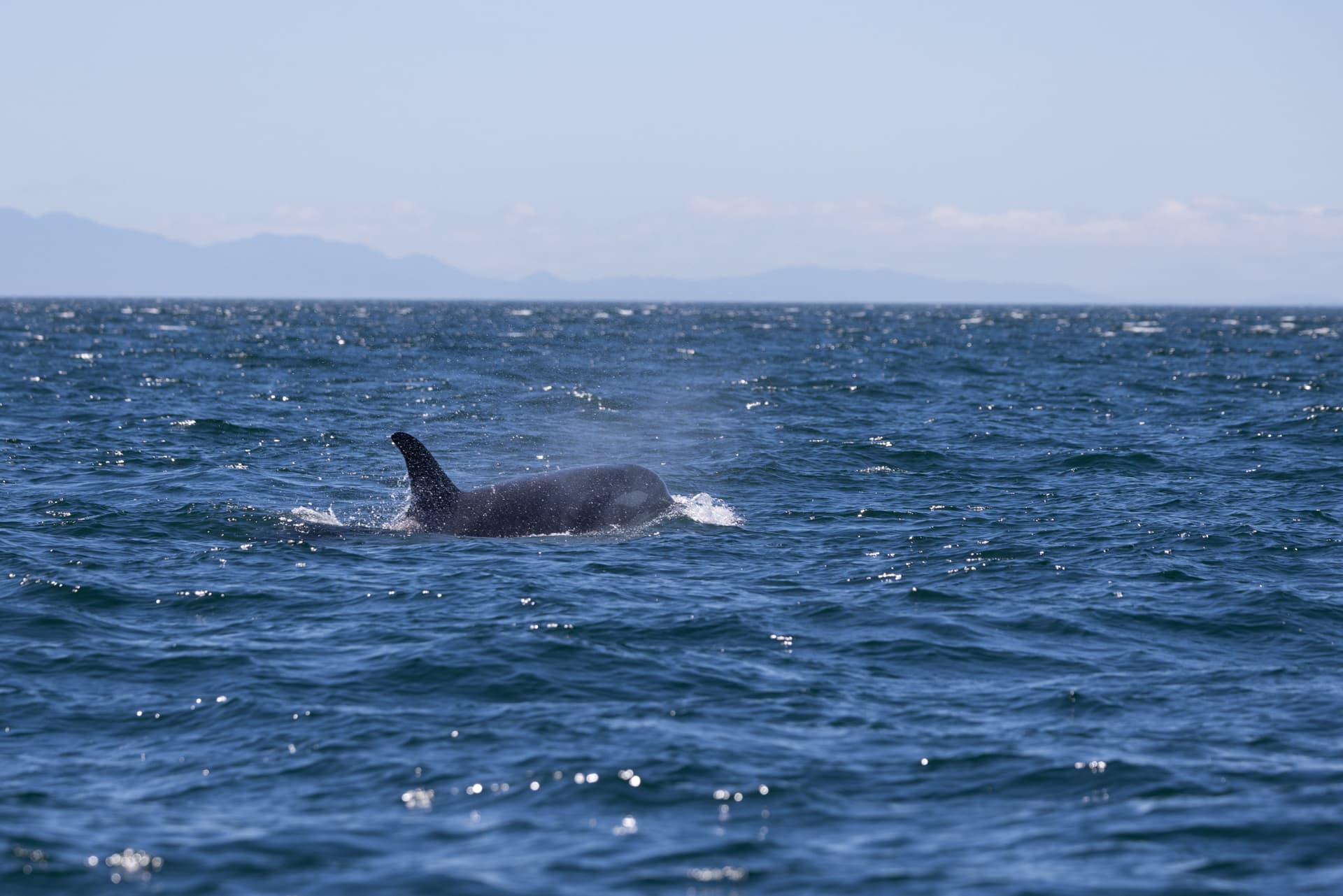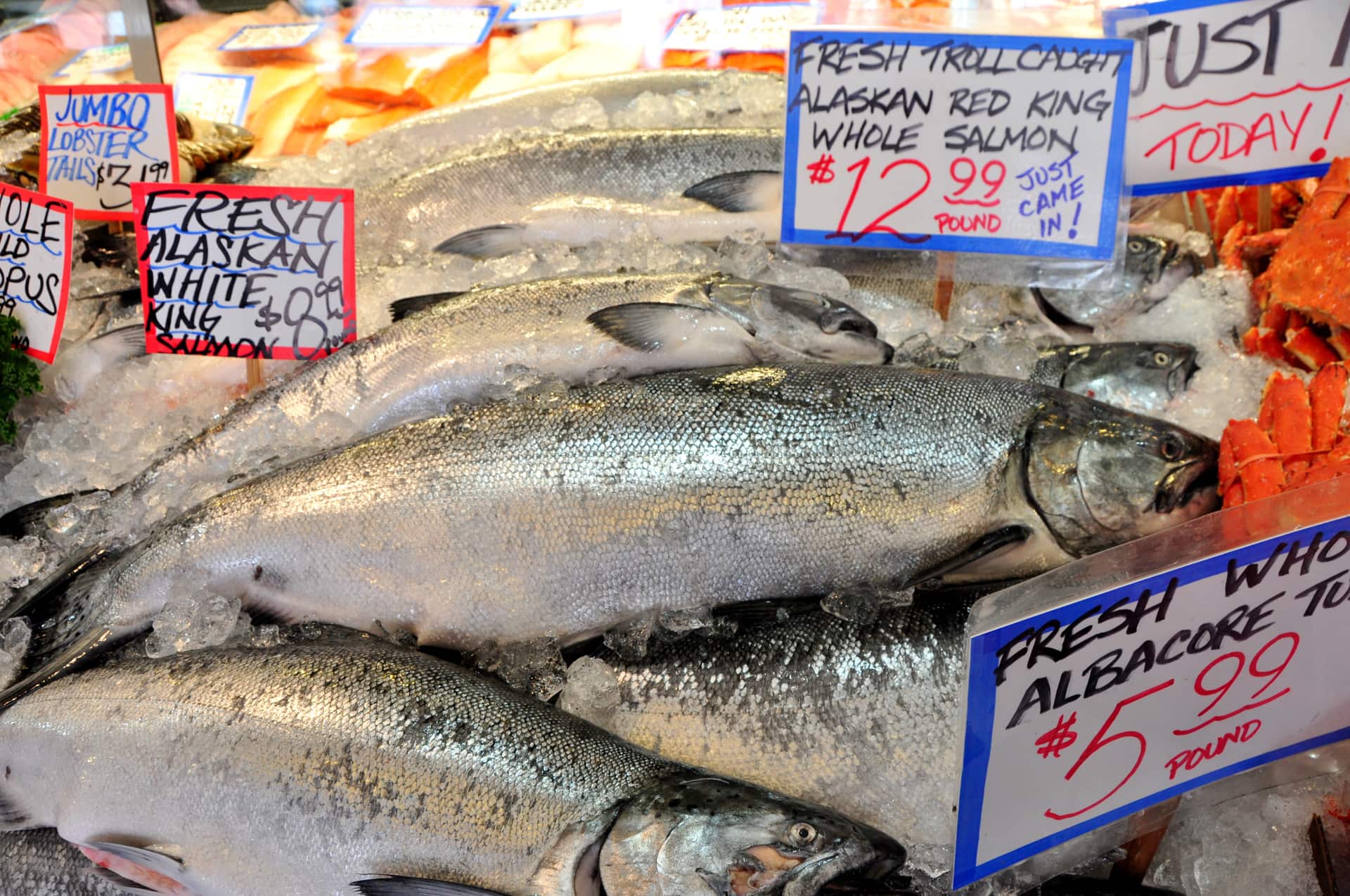
A recently published study shows a surprisingly high level of cooperation and a measurable noise reduction.
In 2014, the Port of Vancouver, Canada, working with a wide range of partners, launched its Enhancing Cetacean Habitat and Observation (ECHO) program to “better understand and reduce the cumulative impact of shipping.” Trials have been ongoing since 2017 to reduce noise levels from June to October—when the Southern Resident killer whales are most often foraging in the Salish Sea, as vessel noise is one of the main threats to their survival when prey is scarce.
What conservation measures did ECHO try in 2020?
- Slowdown zones: ECHO asked large commercial shipping to voluntarily restrict their speed to either 11 or 14.5 knots (depending on vessel type) when in designated sections of Haro Strait, Boundary Pass, and new in 2020, Swiftsure Bank. In total, slowdowns were active over an area covering approximately 34 miles.
- Lateral displacement: This measure requested that tug boats voluntarily take a more southerly transit route into existing shipping lanes. Not only would this move vessels farther offshore from killer whale foraging areas, but it could also decrease collision risk with this endangered population.
- Interim Sanctuary Zones: Enforceable “off-limit” zones off Pender and Saturna Islands applied to all vessel types, including fishing.

J37 and J59 swim past a large vessel in Haro Strait. Underwater noise from large vessels can reduce hunting success.
What was the vessel operators’ response?
Researchers tracked compliance by collecting transit data from all vessels using their Automated Identification System (AIS). AIS is mandatory for large commercial vessels, known as Class A, but also used by smaller commercial vessels, Class B.
Astonishingly, over 80% of transiting Class A vessels undertook these voluntary slowdown measures during the 2020 trial, as analyzed in this study. In fact, more ships adopted a slowdown this year than in any of the previous three trial years.
Analysis suggested that in the new Swiftsure Bank slowdown area, 82% of all ships were within one knot of the target speed requested by the ECHO program. Researchers reported that “the most notable reduction of speed was by container ships that participated in the program in the Haro Strait-Boundary Pass trial area.”
2020 was the most successful year to date for tug boat participation. Notably, researchers found that since the trials began in 2017, these vessels have moved almost a mile offshore. This change puts them farther away from protected killer whale foraging areas—just as the trial intended.
Sadly, compliance in the sanctuary zones was again poor in 2020. Researchers reported that “Swanson Channel showed Class B vessels consistently present,” although they speculated this might be due to a lack of awareness.
Continued below...
What was the impact on noise levels?
Scientists are especially keen to reduce shipping noise levels in the same frequency ranges the Southern Resident killer whales use for communication (500 Hz to 15 kHz) and for echolocation when hunting (15 to 100 kHz). According to researchers, vessel noise in these ranges will “potentially impact [the whales’] ability to send and receive signals or accurately interpret them.”
For Class A vessels adopting the slowdown measures, the hydrophones recorded considerable decreases in noise across a broad spectrum. Importantly, the shipping slowdown also decreased noise in the frequency range used by the Southern Resident killer whales and was especially notable in Boundary Pass.
Researchers also remarked that “the reduction in noise as a result of moving tugs away from Southern Resident killer whales’ critical habitats was noticeable.” They reflected that this simple request to move into existing shipping lanes was much more feasible than re-routing traffic in a confined area such as the Salish Sea.
What’s next?
Based on these positive findings, researchers have modeled additional measures to trial ECHO in Canadian waters in future years. They believe that a combination of voluntary plus regulatory action with enforcement may be needed, especially in the sanctuary zones, where awareness campaigns are apparently essential.
The elephant in the room here is that an international boundary bisects the Salish Sea, and since 2017 these conservation measures have only taken place in Canadian waters. Yet many other large vessels have been transiting through U.S. waters across the border in sight of Canada without the same principles.
Fortunately, their sister program “Quiet Sound” belatedly stepped up to the plate in 2022 with the first slowdown trial across the Salish Sea border. With the Southern Resident killer whale population stagnating at just 73 individuals, every measure to help them find their increasingly scarce prey is essential.





